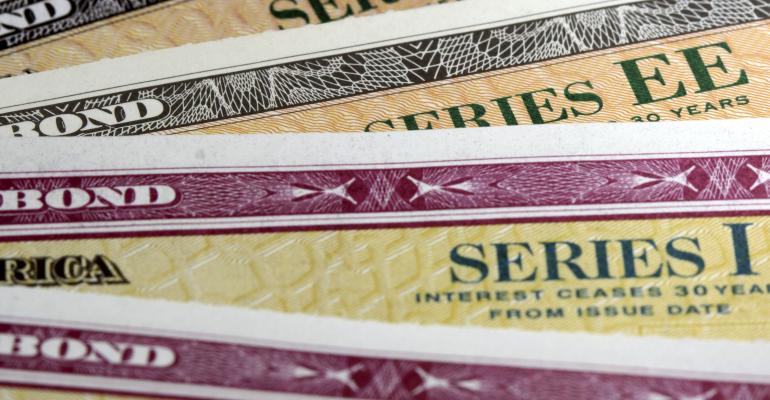(Bloomberg) -- After the mayhem of March, Treasuries have entered a period of fragile calm as traders balance hopes that U.S. businesses will start to reopen against the devastatingly weak economic backdrop that’s likely to prevail for months.
The big question for investors now is which force takes precedence. President Donald Trump’s guidelines for states to relax social-distancing measures amid the pandemic, along with hints of progress on a medical treatment, helped buttress risky assets last week.
But demand for the safety of Treasuries is keeping yields around the middle of this month’s range as corporate leaders and Federal Reserve officials alike warn of the hurdles to reviving the economy. There are no bright spots ahead in the data: This week is expected to show that 4.5 million more people lost their jobs as the economy cratered. That grim outlook promises to weigh on yields even as the government ramps up debt issuance to pay for measures to support the labor market and other sectors.
“We had the great lockdown but it’s not going to be a great reopening,” said Priya Misra, global head of interest-rate strategy at TD Securities. “The reopening will be phased and gradual and there might be sudden stops along the way.”
Ten-year Treasury yields have swung about 22 basis points in April from high to low, a relatively contained move after last month’s historic turbulence. The world’s borrowing benchmark yields 0.64%, little changed from where it ended March. Meanwhile, the ICE BofA MOVE Index, an options-based gauge of implied volatility in Treasuries, has plunged from the highest in almost 11 years, and is about where it was in late February.
The last time traders were talking about a range-trade in Treasuries was early this year, when the market was still absorbing the U.S.-China trade deal and assessing whether the Fed would stick to its stance of keeping rates steady in the face of a sturdy economy.
Trump left many difficult decisions to governors as they consider easing steps to slow the virus’s spread. New York has already extended its lockdown to May 15, and New Jersey said it would keep schools closed at least until then. New York Fed President John Williams on Friday expressed caution, saying the economy will struggle to return to normal even after restrictions are lifted.
“I don’t expect the reopenings that may come in early May to be anything meaningful for the economy,” said Marty Mitchell, an independent strategist. “And it really is a global conundrum with regard to the pace of reopenings. Given this, we’ll likely see yields move lower.”
Supply Pressure
There may be upward pressure on yields as Treasury supply starts to swell. The department will unveil its plans at its quarterly refunding announcement May 6. The government has already sold billions of dollars in additional bills -- with more on the docket this week -- and has increased some note and bond sales.
The Fed will sop up a big chunk of the extra issuance, although the central bank has been gradually slowing the pace of buying after stepping in to support market liquidity last month. It will purchase about $15 billion a day this week, down from around $30 billion a day last week. So as auctions grow, investors will have to digest the rest.
“The market will have to finance the enormous fiscal programs put in place, which means there’s a lot of supply coming,” said Mark Holman, chief executive officer at TwentyFour Asset Management. For now, “Treasuries are still a safe asset and the economic outlook is pretty bleak,” so yields may stay in a range.
Auctions this week include new five-year Treasury Inflation-Protected Securities. While TIPS have been pummeled by declining inflation expectations, the new issue may appeal to investors -- relative to older securities. That’s because it has no accrued value to lose in the event of negative readings on consumer prices, which erode TIPS principal, but only down to a par floor.
What to Watch
-
Here’s the economic calendar:
- April 20: Chicago Fed national activity index
- April 21: Existing home sales
- April 22: MBA mortgage applications; FHFA house price index
- April 23: Jobless claims; Bloomberg economic expectations/consumer comfort; Markit U.S. manufacturing, services PMIs; new home sales; Kansas City Fed manufacturing activity
- April 24: Durable/capital goods; University of Michigan sentiment
- There’s a light Fed calendar:
- April 22: New York Fed’s Daleep Singh in webinar discusses central bank’s actions related to the pandemic; New York Fed’s Kevin Stiroh in webinar discusses climate change’s impact on financial institutions and the economy
- Here’s the auction schedule:
- April 20: 13-, 26-week bills
- April 21: 52-week bills
- April 23: 4-, 8-week bills and 5-year TIPS
--With assistance from Elizabeth Stanton.
To contact the reporter on this story:
Liz Capo McCormick in New York at [email protected]
To contact the editors responsible for this story:
Benjamin Purvis at [email protected]
Mark Tannenbaum, Nick Baker
© 2020 Bloomberg L.P.





